TO MANAGE OTHERS, MANAGE YOURSELF FIRST
Moez Kassam: A Hedge Fund Manager At The Frontier of Investing

Robin Hills

IGNITING CHANGE THROUGH EMOTIONAL INTELLIGENCE


A Winner in Both the Hockey Rink and Crypto Arena
TREVOR KOVERKO
Transformatinal
IN - FOCUS
IN - FOCUS


Embracing Excellence

Editor-in-Chief
Daryl Yeung (Story-Tailor)
Naomi Lam (Design Ninja)
Matt Reis (Wordster)
Adam Waring (Grafista)
Ian O'Shea, Matt Hale, & John Riggs (Three Musketeers)
Cathy G. (Explorer)
Sales
Project Manager –Marketing Manager –Senior BDM

Josh Wilder (Cultivator)
Mike Jackson (Marketeer)
Katherine Price (Sustainer)
Richard Dann (Facilitator)
For any advertising related information, please contact info@exeleonmagazine.com. Submissions as well as contributions to the magazine are welcome.
Take a moment and let us know about our magazine; whether it be about the design or a possible mistake, we would appreciate any feedback from your end. You can reach out to daryl@exeleonmagazine.com.
The design, images, and content in this issue should not be
in any
or
i.e.
electronic,
photocopying, or otherwise, without any permission from Exeleon Media.
Copyright © Exeleon Media LLC. All rights reserved.
reproduced
manner
by any means,
mechanical,
recording,
600 N Broad St 5 Middletown, DE 19709, United States +1 (302) – 569 – 9387
–
Director –
–
–
Curator –
Art
Managing EditorCreative Director
Contributing Editors
Content
–BDM –

CONTENTS ROBIN HILLS 12
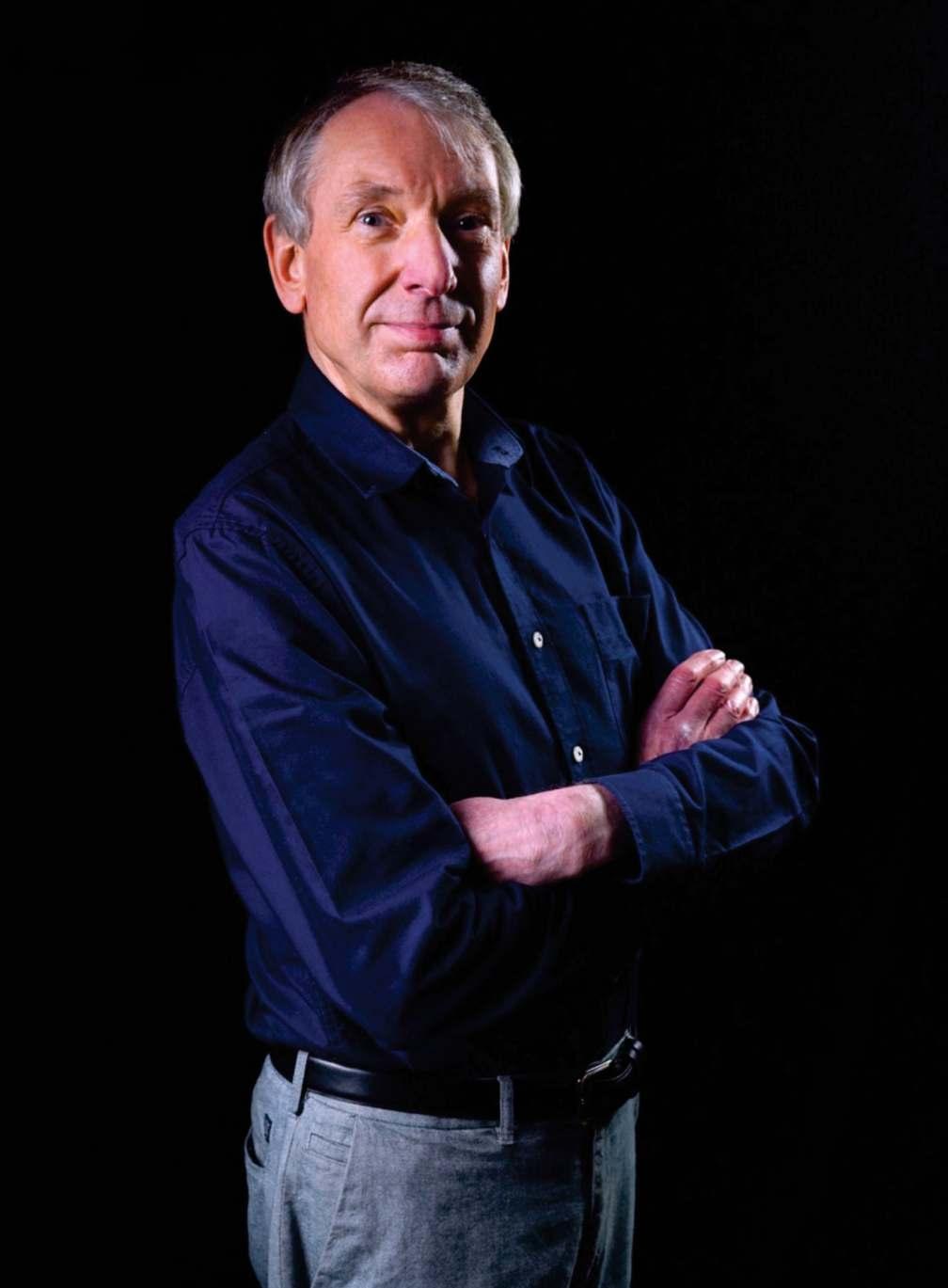

MANNA DABHOLKAR 32
CONTENTS
CONTENTS
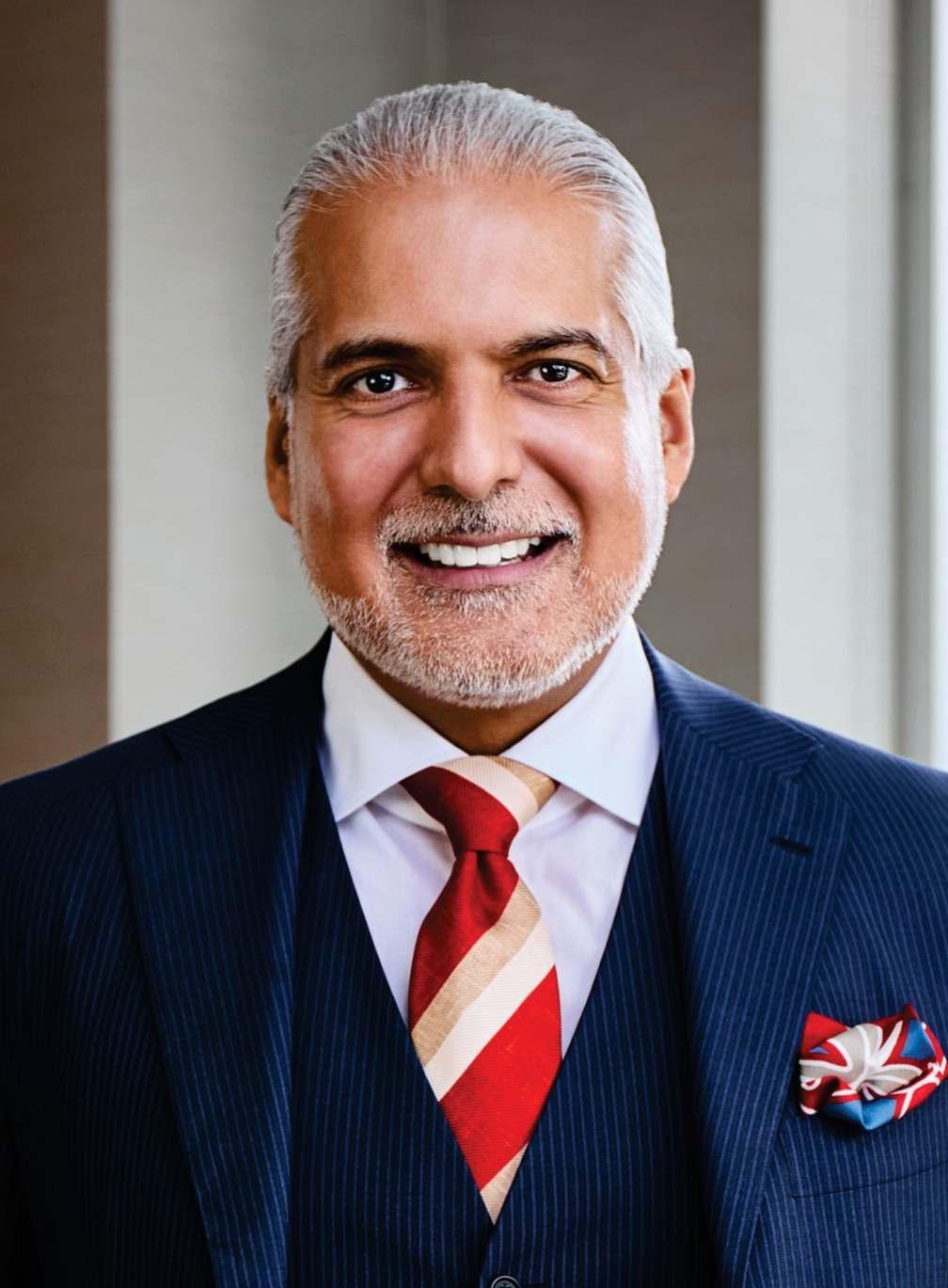
ARIF BHALWANI 40


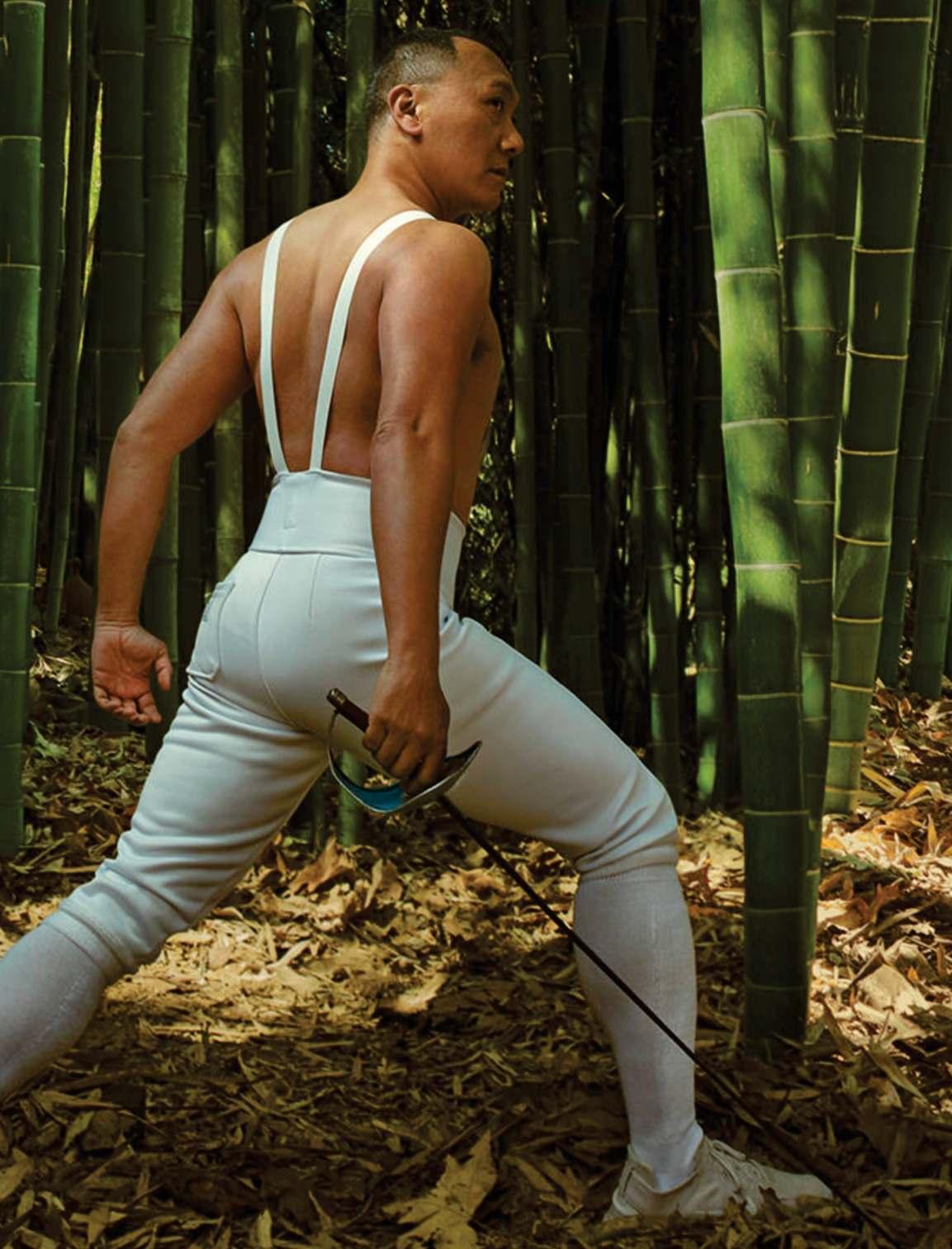
Robin

12 EXELEON MAGAZINE
Hills Igniting Change through Emotional Intelligence COVER STORY WWW.EXELEONMAGAZINE.COM Emotional Intelligence Facilitator and Coach | Ei4Change 13
Robin
It is through emotions that we experience the highest of highs and our vulnerable lows. It allows us to connect to one another, one that transcends logic and touches upon the very core of our shared humanity.
Within this intricate tapestry of emotions lies the transformative power of emotional intelligence.
Emotional intelligence encompasses the ability to recognize, understand, and manage our own emotions, as well as navigate the emotions of others in an effective manner.
Standing out as one of the pioneers in this space is Robin Hills, a seasoned expert in training,
coaching, and personal development focused on emotional intelligence, positive psychology, and neuroscience.
Robin has over 40 years of business and commercial experience helping executives and leaders develop business performance with increased self-awareness and understanding of others. Moreover, Robin is the founder of Ei4Change, a company specializing in educational training, coaching and personal development focused on emotional intelligence.
Recognized internationally for specializing in emotional intelligence, Ei4Change tailors blended learning through live and online workshops as well as coaching that creates positive change at the personal level, the team level, and at the organizational level.
According to Robin, “We have experience of working with people at all these levels within organizations to align people enhance their interpersonal and intrapersonal skills that lead to improvements in performance inside and outside of work.”
Fittingly, Robin features on the Cover of our Transformational Leaders to Follow issue. In this Cover Feature, we look into the journey of Robin Hills and his ideas related to emotional intelligence.
B
By nature, humans are emotional creatures. From the tiniest of gestures to the grandest of actions, emotions dance within us, thereby shaping our thoughts, behavior, and communication.
COVER STORY EXELEON MAGAZINE 14
THE EARLY DIRECTION
Over the years, Robin has established his name in the emotional intelligence space as a leading coach and trainer. However, surprisingly, he didn't start his career focused on emotional intelligence. He recalls, “At the time, it hadn't even been heard about as it was in the early stages of research in academia.”
Robin graduated with a degree in Biology from Durham University. Following which, he started his career as a medical representative selling products to general practitioners and hospital doctors in London.
While working in this role, Robin noticed something particularly interesting. “I noticed that their (doctors and practitioners) attitude towards me and my role varied considerably, also people's reaction to their own jobs differed greatly from person to person.”
He mentions that some people were in constant states of stress and anxiety, while others behaved more calmly and had better relationships. “I was interested in why these differences occurred, especially when the job role was similar in many instances.”
When Robin read Daniel Goleman's book on Emotional Intelligence, he realized this to be the answer to his question. Moreover, he also realized his own success in this area was primarily due to his own emotional intelligence.
Soon after, Robin left the medical representative role, and relocated to the North-West of England to take up a leadership role within the pharmaceutical industry.
“After a few years and a few changes in my job and a few redundancies, I decided to set up a business specializing in emotional intelligence focused on its application in the workplace,” he explains. And thus began Ei4Change.
to work on it away from your mobile device or computer and interact with other people, try out new approaches to determine what works and what doesn't.”
Robin makes sure to explain this at the beginning of each course to set the right expectations among his students.
When Robin Hills created his �irst course in the summer of 2014, it was a dif�icult situation
SPECULATE TO ACCUMULATE
Through his platformEi4Change, Robin has developed the most comprehensive range of emotional intelligence online courses available on the internet. These courses cover topics like leadership, teamwork, con�lict management, resilience, and communication skills.
Robin understands that training emotional intelligence online is extremely challenging. He elaborates, “You can't become emotionally intelligent by watching a few videos, taking a couple of quizzes, and downloading some PDFs. You can learn about emotional intelligence, but to become more emotionally intelligent, you need
for him as he was unaware of the response that the course would potentially receive.
He recalls a quote “you have to speculate to accumulate” that was extremely helpful to him over the many months it took him to develop his �irst online course. “Also, there were no guarantees that the course would be successful. It was an interesting use of my time when I wasn't delivering training or coaching. However, I was determined to give it a go and see what happened.”
Almost a decade later, today, Robin has over 30 courses with over 400,000 learners enrolled across 195+ countries.
COVER STORY WWW.EXELEONMAGAZINE.COM 15
Robin Hills has created over 30 courses with over 400,000 learners enrolled across 195+ countries.

EXELEON MAGAZINE 16
EI II

A Power Skill
Robin mentions that there's a lot of misconceptions or misunderstandings when it comes to emotional intelligence. A common misconception being that EI is about being kind and nice, or even about suppressing any emotions that are unpleasant, one which can lead to negative reactions or behaviors.
In reality, Emotional Intelligence is about being able to understand, manage, and express emotions appropriately.
He explains, “Emotions contain data so emotional intelligence means working with emotions as they surface and using this data to make better decisions and build authentic relationships.”
He further notes another common misconception that 'emotional intelligence is all about common sense'. “To a certain extent it is, but common sense is not that common.”
For many, emotional intelligence is often referred to as a soft skill. To which Robin asserts “It is one of the hardest skill sets to train people in. Rather than considering emotional intelligence as a soft skill, it should be considered as a power skill.”
With Ei4Change, Robin helps leaders unlock this power skill and allows them to become the best version of themselves, whether it be at work or at home. For this, Robin uses internationally recognized pro�iling tools to assess type, trait, behavior, and emotional intelligence.
COVER STORY WWW.EXELEONMAGAZINE.COM
17
EMOTIONS OVER ARTIFICIAL INTELLIGENCE
One of the most interesting developments recently has been the emergence of AI tools.
Unsurprisingly, it has caused a lot of panic and fear among people, to an extent that many governments are seeking to restrict or ban its use. THIS IS BASED ON EMOTION!
According to Robin, “What AI lacks is a human brain capable of working with emotions. Our brains are incredibly complex and dynamic systems, made up of hundreds of billions of neurons continually communicating and interacting with one another. AI is program based around statistics and so it cannot gain knowledge like we can through experience.”

He adds, “A good book that I recommend to have a deeper understanding on these topics is “The Emotional Life of your Brain” by Richard J. Davidson with Sharon Begley.”
EVOLVING SKILL SET
Since beginning his work in the emotional intelligence space, Robin has had to learn and develop a whole new set of skills.
This includes pedagogical and content knowledge with a thorough understanding of adult learning, instructional design, and content. This also includes keeping up to date with the latest research and trends.
To create his online courses, Robin had to also develop video production skills, editing and
presentation skills, and technical skills related to online platforms and software.
He notes, “You will notice that all these skill requirements have arisen over the last few years and, certainly, weren't considered as a fundamental part of my degree or early job roles last century!”
Robin sets high standards for himself and strives to do his best to attain the same. 'I am aware that I can't meet everyone's expectations in a timely manner and that I make mistakes along the way. However, as long as what I produce is �it for purpose, I can go back and change it and make it better.”
He sums up this approach with one of his favorite quotes - “Imperfect
action is better that perfect inaction.”
EI-MATTERS
Most recently, Robin has launched a webzine named ei-matters, under the umbrella of Ei4Change.
ei-matters is a digital magazine focused on emotional intelligence sharing news, views, articles, podcasts, and more around the topic of emotional intelligence. It has a global reach and can be accessed from any device anytime and anyplace and has attracted a lot of attention.
The webzine provides readers with greater insight into the power of emotional intelligence Through the available resources, they can learn
COVER STORY EXELEON MAGAZINE 18
Life isn’t at one end of a fulcrum with work on the other. ‘ ‘

more about how to develop the skills needed to better manage and work with emotions to make effective decisions and build authentic relationships.
Podcasts have proved to be a very popular resource as people like to listen to them when it is convenient for them. ei-matters features a range of free podcasts covering topics associated with emotional intelligence in greater detail, making them ideal for people looking for in-depth information. The podcasts featured are all in the top 2% of global business.
Robin claims, “As ei-matters grows and becomes further established, we are hoping that it will become the valuable resource that people
turn to when they want to �ind out more about emotional intelligence.”

BEYOND WORK-LIFE BALANCE
When asked about how he ensures work-life balance, Robin points out “If you think about this concept, work-life balance is a counterproductive idea. It's a debilitating phrase because it implies that work is bad and life is good, and there's a strict trade-off between the two.”
According to him, the issue with the phrase work-life balance is that it compartmentalizes everything into work activities - meetings, clients, trips, conferences - and life activities - family commitments, holidays, hobbies, keeping healthy.
“Life isn't at one end of a fulcrum with work on the other. Work is an integrated part of life. You only have one life, and you just happen to live some of it while working and some of it engaged in other activities.”
In conclusion, Robin states “Rather than seeking to get a balance right, I try to integrate my work activities into my life and to be as emotionally intelligence about this in the most appropriate way possible.”
COVER STORY WWW.EXELEONMAGAZINE.COM 19
We Embrace Excellence!
Exeleon Magazine features some of the leading players in business and shares their journey of excellence to inspire aspiring leaders across the globe.


SUBSCRIBE


www.exeleonmagazine.com
TO MANAGE OTHERS, MANAGE YOURSELF FIRST
EXELEON MAGAZINE 22
I II
f you expect to be an effective leader who creates positive results, you can't do it alone. You need a team of followers willing to be �lexible in accomplishing the mission and goals you want to achieve with their help. In many cases, engaging your team in support of positive goals will mean helping your followers change their behavior. You may need to encourage them to do more of some things, less of other things, and in some cases, adopt completely new behaviors.
The catch is that you can't make people do anything. The only person whose behavior you can control is your own. Therefore, any change in others' behavior needs to begin with you, the leader, changing your own. You need to manage yourself. If you are not getting the results you'd like from others, you must make different choices. Only when your behavior as a leader begins to change can you in�luence others to change their behavior. That's the essence of the leadership logic chain.
The best way to make the leadership logic chain come alive in your pursuit of leadership effectiveness is to follow this four-step process:
Ÿ Develop awareness of your effectiveness as a leader
Ÿ Decide to adopt new behaviors
Ÿ Demonstrate new behaviors
Ÿ Give those you in�luence a chance to change their behavior in response
Step 1: Develop awareness of your effectiveness as a leader
Being a successful leader begins with paying attention to what you're doing, that is, being consistently aware of what's working and not working in your thoughts and actions as a leader.
Self-awareness is not just a crucial component of the leadership logic chain. It is fundamental to leadership intelligence. And you'll discover in Chapter 4, “Get to Know Your Real Self,” paying attention to your thoughts, feelings, and behavior is vital. For now, try to spot triggers for unproductive behavior, such as times of the day or certain kinds of people. One leader we know became irritable like clockwork every day around 3:00 PM. If her team met around that time, they could count on her being sarcastic and unreceptive to their ideas. Her employees coped by making jokes about “the three o'clock monster.” It wasn't until a brave colleague approached her about her mid-afternoon drop in civility that she learned to avoid scheduling meetings at that time and to take a 10-minute break for some deep breathing and a healthy snack.
Noticing patterns is another form of self-awareness and one of the most powerful ways to gather information about your leadership effectiveness. Patterns are thoughts, feelings, or actions that you repeat over and over, as if on “autopilot,” in response to certain situations. Some patterns may work well for you as a leader; for example, when interviewing job candidates, you always make a point of sharing your values and asking about theirs. Including a discussion of mutual
values during each selection process gives you essential information about whether a prospective employee is a good �it for you and your team. When your values and those of a promising candidate are aligned, you also get a jump start on emotional bonding with a likely new team member.
When you're aware of successful patterns, you can expand their use to other situations where they may have even more impact. For example, you could use awareness of the bene�its of discussing values with job candidates to expand this practice to others, thus enhancing your in�luence with peers, clients, family members, and friends.
Other patterns don't work so well. None of us is perfect. We all get trapped in unproductive patterns at some point in our lives. Certain patterns may once have been positive, helping you accomplish important goals earlier in your life or leadership roles. But as you grew and developed, they became negative or limiting.
Negative patterns often persist precisely because they served as success strategies in the past. We were rewarded for following those patterns and in the absence of selfawareness, continued them out of habit, even when they no longer produced successful results. That was the case with Randy, CEO of a large �inancial services business. Randy was a superstar who rose quickly in his career thanks to his smarts and strong work ethic. But Randy was somewhat of a “Lone Ranger,” conscientious to a fault, expecting far more of himself than others. Eventually, the very conscientiousness that had propelled him to the top took its toll
WWW.EXELEONMAGAZINE.COM EXELEON EXCLUSIVE 23
on him. As Chuck coached Randy, he opened up about how overwhelmed he had felt with all that was going on in his �irm. “I just feel like I have 15 balls in the air all the time, and I can't let any of them drop,' he explained. 'I don't know how much longer I can go at this pace. Maybe I'll hang in there for another �ive years, then retire because I'll be all out of gas by then.” Chuck sensed that Randy was about to burn out. So, Chuck suggested, “What if you shared some of those responsibilities with your executive team?” 'But these are my responsibilities,' Randy countered. “I can't just of�load my job on them.” Chuck was empathetic. “I can
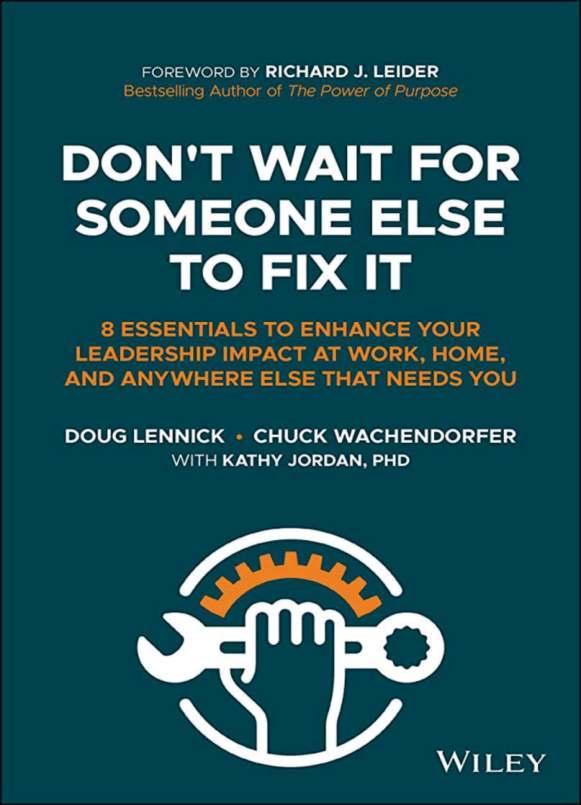
appreciate where you're coming from,” he said. “You don't want to overwhelm your team. But have you ever thought about who might want your job someday? Empowering them to do some of what you do now could be a great development opportunity. Sharing your CEO responsibilities might also inspire them to create development opportunities for their own teams.”
Randy sat quietly for a few moments. Then he took a deep breath, exhaled slowly, and replied, “It never occurred to me that I might be denying them growth opportunities, that they might want to step up and demonstrate that
they could handle more.” Randy saw that he didn't need to stay stuck in a negative pattern. He could improve his own life and, at the same time, create opportunities for others on his team. Randy immediately started talking about what projects he could share and with whom. Then Chuck asked, 'Ok, let's say you've done that. What would you do with your new free time?' “I've always wanted to learn how to �ly,” Randy said with a big grin. True to form, Randy didn't waste any time. He enrolled in �lying lessons, and within a year earned his pilot's license, got his instrument rating, and bought his own plane. Empowering others allowed Randy to renew his energy for life outside of work while providing leadership development opportunities for his executive team. Win-win.
Randy's story is just one example of the need to recognize patterns that become less effective as you mature, and your team or organization grows. When you're a leader, everything around you is constantly changing. That's why self-awareness is so central to your success. Some behavior patterns that helped you when you led a team of �ive people don't work when you're leading an organization of 500. Patterns you relied on when leading a group of experienced professionals may not cut it when leading a group of rookies. When what you've been doing no longer seems to be working, consider how and why your previously successful behaviors aren't working for you anymore.
Read the rest of the book from here: https://a.co/d/gMDGCdR
EXELEON MAGAZINE 24
ABOUT THE AUTHORS
DOUG LENNICK
Co-author of DON'T WAIT FOR SOMEONE ELSE TO FIX IT , is the founding CEO of think2perform, a high performance leadership development �irm serving small and large organizations in a variety of industries. He has been in leadership roles for nearly 40 years and is widely recognized as an expert in the science of human behavior.

CHUCK WACHENDORFER
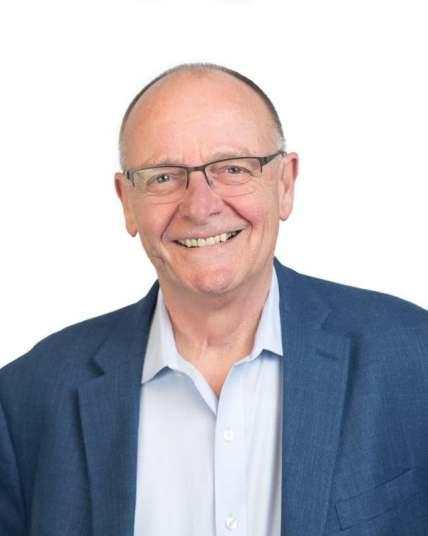
Co-author of DON'T WAIT FOR SOMEONE ELSE TO FIX IT , is President of Distribution at think2perform. He is a renowned leadership development professional and has worked with clients including American Express, Wells Fargo, Comerica Bank, TD Wealth of Canada, Charles Schwab, and others. His insights on leadership have been featured extensively in media such as CNN Money, Forbes, Fortune, and The Denver Post.
Excerpted with permission from the publisher, Wiley, from Don't Wait for Someone Else to Fix It by Doug Lennick and Chuck Wachendorfer. Copyright © 2023 by John Wiley & Sons, Inc. All rights reserved.
WWW.EXELEONMAGAZINE.COM 25



EXELEON MAGAZINE 28
Trevor Koverko:
A Winner in Both the Hockey Rink and Crypto Arena
Trevor Koverko is a leading Canadian Web3 innovator with a fascinating life story. With a command of hockey pucks and security tokens alike, he's achieved a record of excellence in both business and in sports. Recently he sat down with Exeleon Magazine for a wide-ranging conversation, partially reprinted below.
Q: In a short time, you've founded, co-founded or invested in several cryptocurrency startups. Would you call yourself a seria l entrepreneur?
Trevor Koverko: Well, I not only love to start tech companies from scratch, but also hang out with founders, although I'd say I learn more from them than they do from me. I've come to realize there's nothing harder – or lonelier – than being a founder. I have great respect and empathy for others going through the daily struggle of building tech companies.
You might say I've actually become addicted to the thrill of being a founder; telling a new story, assembling a team, and racing to PMF as fast as humanly possible. My present focus is on a new venture called Matador Gold Technologies, but I've also been closely involved in the launches of a pioneering security tokens �irm called Polymath, a metaverse company called Tokens.com, and a project that introduces NFT's to the “carbon credits” space called MintCarbon. Other companies I have founded or invested in include ShapeShift, eProf,

WWW.EXELEONMAGAZINE.COM EXELEON EXCLUSIVE 29
Skyline Capital, Block.One, Hashgraph, and an early Oculus Rift-based project that became one of the world's �irst VR exits.
Q: Matador Gold Technologies seems like a departure. Is it a cryptocurrency company?
Trevor Koverko: It is. By applying the advanced technological bene�its of the blockchain, we are revolutionizing the buying and selling of the world's oldest surviving currency. We are bringing transparency, value, security and stability to this market. The retail realm of the gold industry is ripe for disruption. The options for ordinary people to buy real, bullion gold in a modern format are lacking. Buying from a traditional brick-and-mortar dealer feels antiquated, while using a mainstream bank comes with a cocktail of fees and surcharges. Worst of all is the Wild West of “buy gold online” websites where a user is bombarded with conspiracy theories and guided to a 1980s- style shopping cart.
The entire buying and selling process is stuck in the past and is in desperate need of a refresh. I see a future where buying bullion gold is as seamless as buying a stock: a user simply makes a download from the app store, sets up a pro�ile, and then safely makes a low-commission transaction in seconds.
Q: Is gold a hedge against crypto?
Trevor Koverko: I wouldn't put it that way. I'm incredibly bullish on cryptocurrencies. It's the way forward to an exciting future of Decentralized Finance (DeFi) and many more innovations that will transform the way we save, invest, do business, and even live our lives. We should also recognize the time-tested advantages of gold. There's the matter of scale, as well. As of early this year, the entire market capitalization of the crypto market stands at roughly $1 trillion. That is a drop in a bucket compared with global gold which stands at a staggering $12 trillion.
Q: Tell us a bit about how you launched Matador, and what your plans for the future are.
Trevor Koverko: During the pandemic, when economic activity was at a standstill, I partnered with my close friend and gold industry veteran Donato Sferra to lay the groundwork for a modern gold trading platform. Industry heavyweights such as Osisko Mining, Kitco, and Hive Blockchain soon got on board as strategic partners.
I assembled an engineering team which soon created a feature-rich beta version of the Matador app which gives users access to a suite of modern tools such as buy-nowpay-later plans, transparent pricing, low fees, and a �irst-of-itskind loyalty plan where users can earn real gold. In the near future, we plan to launch in the U.S. and offer ESG gold. We further plan to introduce an industry-�irst “perpetual royalty.” We have a
parallel goal to integrate additional “Web 3” technology into our app by using gold-tethered, non-fungible tokens, which will inject collectable value into this new asset class.
Q: We de�initely can't end our interview without asking you about your compelling life story. How did you arrive at this place, at the frontier of the cryptocurrency industry?
Trevor Koverko: It's true that my success in cryptocurrency can be traced to the lowest point in my life. I was six years into my professional hockey career when my car collided with a loaded transport trailer. I almost died. Many painful months of rehabilitation followed, but I began to view my misfortune as a challenge. I resolved to come back stronger than before.
While recovering, I enrolled and graduated from business school and started to explore the exciting new technology called “blockchain,” which was really in its infancy at the time. In 2011 I bought my �irst bitcoin on eBay, and soon I was hooked. I'd like to say I've never looked back, but the reality is that I frequently do look back to that day. It's a painful memory, and it reminds me to take nothing for granted. For me, the accident was an extraordinary moment of renewal, the point where my old life ended, and a new future began.
EXELEON EXCLUSIVE EXELEON MAGAZINE 30
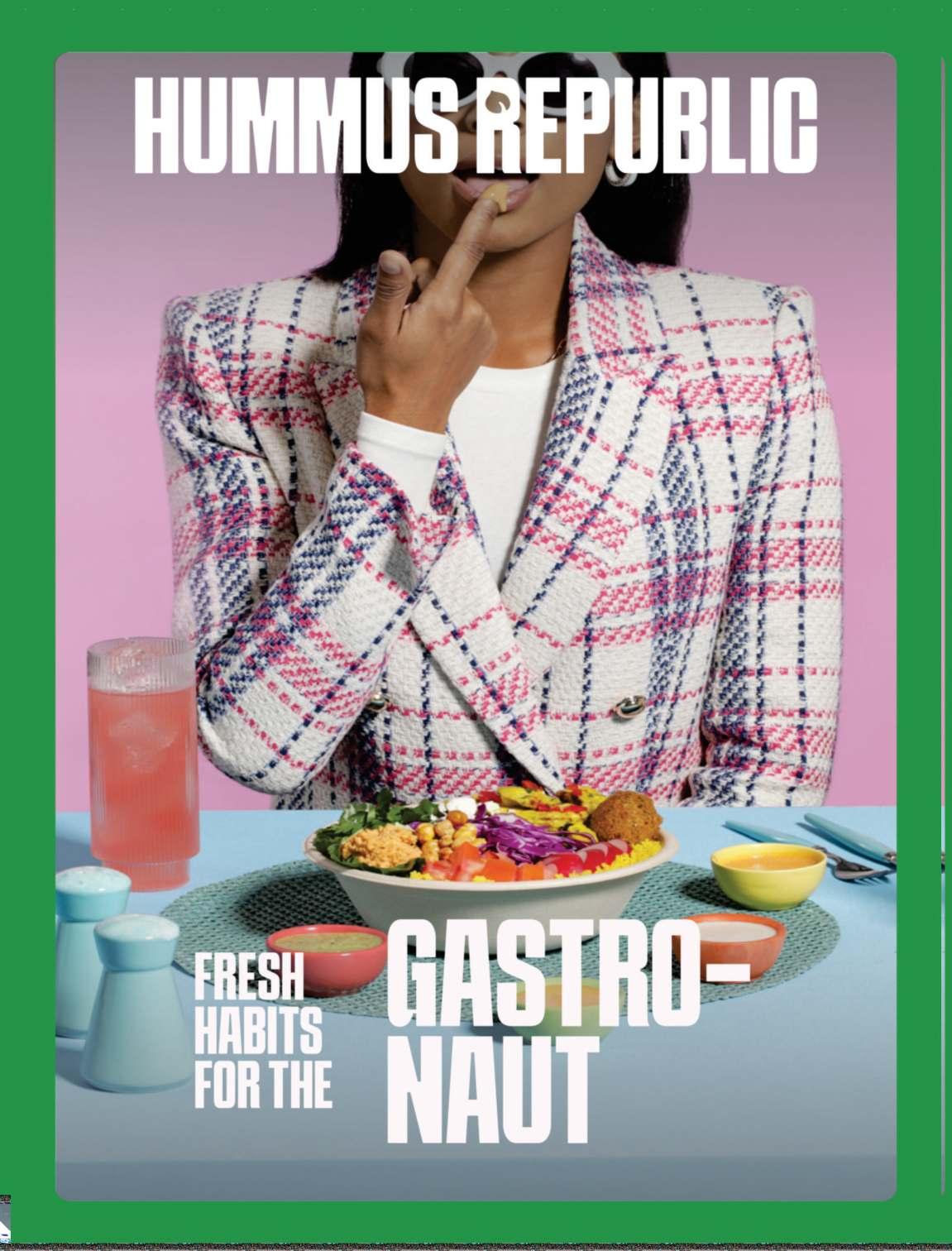
Compassion to Activism
A CONVERSATION WITH MANNA DABHOLKAR
With an unwavering
commitment to social change, Manna Dabholkar has dedicated her life to advocating for the rights of the marginalized and giving voice to the voiceless.
Manna's passion for social justice can be traced back to her upbringing. Raised by a father who served as a public servant, she witnessed �irsthand the transformative power of compassion and assistance. Her father's tireless efforts to aid impoverished, homeless, and malnourished children in the most perilous slums of India deeply in�luenced her worldview. It instilled in her an indomitable spirit to speak out against injustice and stand up for the vulnerable.
As an activist, humanitarian, conscious leader, and social entrepreneur, Manna has dedicated her skills and expertise to empowering communities, challenging systemic inequalities, and promoting human dignity. Through her role as the CEO of GIFT
Global Initiative, she has spearheaded initiatives that address critical issues such as poverty, education, gender equality, and access to healthcare.
Today, we have the privilege to delve deeper into Manna Dabholkar's inspiring journey, her invaluable insights on human rights, and the transformative work she continues to champion. Join us as we explore the life and vision of this trailblazing activist.
As an activist, humanitarian, conscious leader, and social entrepreneur, what is your idea of giving back? Why do you think people should give more?
My idea of giving back is empowerment, empowering others to do better for themselves, for their families and for society in general. 'Give a man a �ish and he will eat for a day. Teach a man how to �ish and you feed him for a lifetime.’
As a former therapist and life coach I believe that the answer to the
debate on whether altruism is an integral part of human nature, written in our genes, or that generosity is a product derived from the civilizing in�luence of culture and religion in human society may come from neuroscience. Contemporary social neuroscience research shows that altruism is associated with a speci�ic pattern of brain activity. These studies indicate that the cerebral cortex, the area of the brain responsible for our most advanced cognitive functions, is involved in altruistic behavior. Studies also show that when people donated to charity, either �inancially or through volunteering, the mesolimbic system, the portion of the brain responsible for feelings of reward, was triggered. The brain releases feel-good chemicals, spurring you to perform more kind acts—something psychologists call helper's high.
Dr. David Hawkins did some 267,000 experiments, he created a Scale of Consciousness. If you haven't read his book Power vs Force, it is a must read. Dr. Hawkins
FROM
EXELEON MAGAZINE IN – FOCUS 32

WWW.EXELEONMAGAZINE.COM 33
measured human consciousness and puts forward a very simple science-based path to understanding your brain's psychology and its Physiology and using it to reach your personal goals and desires.
Imagine you are looking at a staircase with 1000 steps. Now the bottom steps 1-200 are feelings of hate, anger, sadness, and pessimism. From about 700-1000 are feelings such as love, appreciation, happiness, and optimism. And there's a whole bunch of frequencies (i.e., feelings) that fall in between. What Dr. Hawkins observed which is of major signi�icance here is that the brain's physiology also changes dramatically at consciousness level 200, which is the level where the quality of life starts changes, this is expressed by the emergence of concern for the welfare, survival, and happiness of others rather than just for the personal self.
The bene�its of transcending that scale is clearly correlated to happiness and when our state of mind is happy, ful�illed, content and satis�ied, there is nothing in this world that cannot be ours. Materialistic values may stem from early insecurities and are linked to lower life satisfaction. People who transcend that scale of consciousness and thereby attract opportunities and abundance understand one basic truth about human beings. Human brains are wired to give, help, and empower. When we help, it puts us at the top on that scale and your positive empowered state of mind can only attract abundance.
Talk to us about your growing up
years. Being the daughter of a public servant who dedicated his life towards making a social change, how much has that in�luenced your perspective and values?
My journey, a conscious decision to commit my life to public service started well before I landed in the United States as an immigrant 12 years ago. Born and raised by parents who were lifelong public servants - Papa was in politics, a lawmaker advocating for the


poorest neighborhoods and slums in India and Mom was a homemaker supporting his aspirations and crazy ideas to create a better world.
While other kids were out playing and making friends, we were accompanying my Papa on his election rallies, holding his hand, and walking through some of the most dangerous slums of India. The people who lived in these slums had no food on their tables, no running water, no sanitation, or electricity
EXELEON MAGAZINE IN – FOCUS 34
but they welcomed us with open arms. I would see him sit on dirty �loors and eat with these families. Children in shabby old clothes with snot running down their noses, greasy dirty �ingers would hug him. As a child I cringed that he didn't mind the unhygienic conditions around him, often spending hours in these places.
Years later I found myself standing in a small, cold, congested dirty brothel, as it poured outside, trying to rescue those little babies to safety from their traf�ickers. I couldn't turn my back on so many others who are still living in environments that make them easy targets of the darker underbelly of our society. My journey is a lifelong commitment to speaking up against injustice and giving a voice to the vulnerable children, women & men and sharing their stories of perseverance and success. In many ways, my life has come full circle. Today, I �ind myself following in my
Papa's footsteps, loving every minute of this journey.
Prevention and Empowerment are two keywords behind the GIFT Global Initiative. Can you please talk about the emphasis your organization has continued to place on these two impactful keywords?
GIFT Global Initiative is a global diplomacy foundation that uses Social Impact Entertainment to


empower children and families from some of the poorest places on our planet in Asia, Africa, South, Central and North America.
In my 15 years of working in areas that are underserved, povertystricken, drug infested, controlled by cartels, affected by violence, abuse and exploitation, I recognized the stark absence of efforts geared towards prevention. It became clear I must make it a priority to educate governments, individuals, and

WWW.EXELEONMAGAZINE.COM 35
corporations about mindful sustainable charity, bringing a hand up, not a handout.
GIFT was founded to protect families and their children by preventing situations that lead to exploitation of these people. Prevent is a big word for us at GIFT. I never understood why anyone must go through a traumatic episode to get the help they deserve. We must be proactive with humanitarian aid and mindful with the nature of aid we provide to people in need. Transitional aid such as free food, free blankets, free shelter, free medical, etc. is great but only for so long. That's not what GIFT is about. Our goal is to uplift these children, strengthen their family unit so it can provide and protect their own and do not have to rely on outside entities for simple necessities in life. Our goal is to bring them a hand up in life, not a handout.
We do so by 1) identifying areas that require support 2) implementing programs that are preventive in nature and scope such as Education for All, Sports for Solar, Renewable Energy, Clean Water Initiative, Medical Fund, Mobile Clinics, Pop Up Schools, and more.
What has been this journey like for you over the years? What would you change if you were to start again?
The best way to not feel hopeless is to get up and do something. I learnt that early on from my father who has always advocated for people who were marginalized by systematic oppression or stuck in the generational cycle of poverty. It
was a learning curve with many ups and downs.
Creating and running a Non-Pro�it is no different from creating and running a For-Pro�it business. On top of that, humanitarian work can be very exhausting. It is easy to lose sight when there are so many who need help. Knowing and understanding your end goal(s) can help you avoid getting sucked into the sinkhole of depression. You need to have strong boundaries, know what you're �ighting for and what you stand for, so you remain focused and driven to keep pushing without getting overwhelmed by the demands. Clear vision will help you go beyond the realm of fuzzy.
We work with families who have no food on their table for days and most of them use water from a nearby gutter. They don't have toilets, electricity, cable, internet and all the simple pleasures of life. We work with children who are abandoned by their families because they are HIV positive or have cancer or such other medical condition that the family either doesn't understand or does not have the funds to treat or both. We serve children who are at risk of being sex traf�icked at the tender age of 4 and 5. What is our end goal?
What keeps us going is the clarity of our vision for these families and their children. We are not in this just to provide transitional aid. Our goal is Uplifting these people, to Improve their �inancial condition, not to keep them poor, to bring them a Hand up in Life and Not a Handout. Our goal is to educate the world about mindful sustainable giving. We are motivated to keep
�ighting by the success stories we get to share with you all.
More and more companies are getting involved and creating social impact initiatives to contribute to global causes. What according to you is attributing to this change?
I believe that Human brains are wired to give, help, and empower. When we help, it puts us at the top and our positive empowered state of mind can only attract abundance. That applies to individuals and corporations.
A study from Accenture in 2020 says that Companies with a social impact initiative are more pro�itable than the ones who are only in the business of making pro�its for themselves. According to Forbes, a whopping 73% of Millennials are willing to spend more on a product if the brand is environmentally sustainable. According to the same source, nearly 2/3rds of Gen Z consumers have already stopped buying from brands that aren't aligned with their values. And 40% would consider doing so again. The customers are transcending and so should your business. 65% of Americans, including 76% of millennials, will research whether a company's social claims are true. If you're not being straight with people, they're going to �ind out.
According to a 2017 Cone Communications study, 63% of Americans want businesses to advance the cause of social and environmental change – regardless of whether the government takes a role. According to the same study, 87% of Americans are more likely
EXELEON MAGAZINE IN – FOCUS 36
to make a purchase from a brand that promotes a cause they care about. Tom's shoes is a great example of leading with a social cause. Started in 2006 with $500000 by its owner Blake Mycoskie. He sold all his assets to start Tom's and ran with the mission Buy a Shoe, Give a shoe. In 2013, 7 years after it was founded Tom's shoes was worth $625 million in revenue and Mycoskie was worth $300 million. You can build tremendous value for your brand, expand your customer base, increase your existing customer loyalty by simply rebranding yourself as a Socially Conscious Entrepreneur who cares about the general wellbeing of the society around you.
Finally, what does the future look like for GIFT Global? What


programs or schemes are you most excited about in the coming months?
GIFT Global Initiative has adopted the Sports for Solar Energy Initiative that aims at providing Portable Solar Lights and Trees to Plant to households in Africa, Asia, Mexico, and USA, giving families access to low-cost portable solar energy. Our clean energy initiative will expand access to low-cost, durable solar tops, solar jars, and solar lanterns to low-income communities. Solar Power is Education Power.
The population we serve faces complex barriers to accessing ladders of opportunity. Those same barriers are what keep them off teams, out of leagues, and unable to access programs that could support
them to reach their full potential. Addressing one barrier alone is a band aid. Barriers stack up on one another and feel insurmountable.
As you know there isn't a better way to inspire children and create positive role models than to get them engaged in sport. In Africa, Latin America, and Asia, we are tapping into the local love for Soccer and creating a semi-yearly tournament. At the end of the tournament, all participants will receive Solar Lanterns instead of trophies thereby bringing solar lights to their homes in the settlement/slums. We estimate that some $520 million will be saved by consumers by switching from kerosene or biomass fuel to solar energy.
In addition, carbon emissions will be reduced considerably. To deliver these clean energy products, we rely on our strong network of volunteers, non-pro�it partners funded by GIFT and the For-Pro�it sector to provide the cash and technology in�lux needed for a project of this scale. We hope other futuristic companies, governments and individuals will consider partnering with GIFT to bring Solar Lights to communities like the one in Soweto in South Africa. If interested in our Solar Initiative, they can email us at Kim@GGIUSA.org.
WWW.EXELEONMAGAZINE.COM IN – FOCUS 37


Arif Bhalwani
 CEO MANAGING DIRECTOR
CEO MANAGING DIRECTOR
EXELEON MAGAZINE 40
Giving Credit Where Credit Is Due
AArif Bhalwani is an investor and entrepreneur who is making access to capital easierfor companies that have historically been overlooked by large banks. In 2005 hefounded Toronto-based Third Eye Capital, an alternative capital provider whichhas been a valuable resource for Canadian businesses undergoing change ortransition.
Here, he talks with Exeleon Magazineabout his company’s beginnings and the future.
Q: What led to the formation of Third Eye Capital? What was the pain point you wanted to address?
Arif Bhalwani: As an entrepreneur who has experienced �irsthand the challenges of trying to secure �inancing in Canada, I can say that it can be a frustrating and discouraging process. Even with a track record of building successful businesses or having a clear plan for growth, entrepreneurs still �ind that many banks remain reluctant to lend. This is due in part to the high degree of concentration, stringent regulatory requirements, and conservative lending practices of Canadian banks, which typically prioritize low-risk borrowers with established histories of pro�itability and ample collateral. Without access to funding, entrepreneurs may be forced to delay or scale back their plans or abandon them altogether. This can prevent new ideas from being brought to
market and limit the growth potential of existing businesses, ultimately slowing economic growth and sifting innovation.
Given the stability and soundness of our banks, it is embarrassing to see other countries have more �lexible or supportive lending environments. According to the World Economic Forum's Global Competitiveness Report, even emerging market countries such as Estonia, China, and Malaysia rank higher than Canada in terms of access to �inancing.
The concentration of banking in Canada can be seen clearly by the numbers: the top six banks control three quarters of market share in consumer banking, small business loans, commercial lending and wholesale banking. In wealth management, the market concentration is 80 percent.
WWW.EXELEONMAGAZINE.COM EXELEON EXCLUSIVE 41
The situation is different in the U.S. when it comes to bank lending. Institutional investors and private funds south of our border provide the bulk of capital that �irms rely upon. Increasingly, banks in Canada are generating more of their income from fees instead of interest so there is little motivation to disturb this lower risk means of generating pro�its. Banks here have become very comfortable with this arrangement, so much so that many often do not view lending as one of their core businesses. Extending credit to companies in complex situations or that are facing temporary and challenging setbacks is seen as too risky, time consuming, and a poor return on investment.
In Canada, loans today represent a smaller proportion of the assets of large banks than at any time in the past 100 years. There are easier ways for banks to make money, as a result of deregulation. These banks can generate money with a few clicks of a mouse, simply by moving cash around on a screen. There’s much less risk and effort involved in that.
We at Third Eye Capital are in the business of taking on risks that banks perceive as being too high and we are willing to invest the time and rigorous work to understand those risks. In fact, it’s one of the most exciting parts of the job — discovering hidden opportunities, sparking ideas with talented entrepreneurs, and being part of something new and special, something that contributes to the overall economy and society.
Canada needs policies to grow the muchneeded market segment of alternative lenders. What we advocate is greater sources of capital that will open up new �inancing opportunities for Canadian businesses, while raising the standard of living for all Canadians.
Q: Brief us about your growing up years. What is your earliest memory as an entrepreneur that you can remember?
Arif Bhalwani: My childhood memories often center on struggle and privation. My family was expelled from Uganda in the 1970s, as a result of the dictatorship that had taken hold of the country. We spent years in an Austrian refugee camp before coming to Canada.
This is probably how I developed the courage and resiliency to become an entrepreneur. I started running my own businesses at a very young age, �irst out of necessity but later because it was fun and never feels like work. My �irst “real” business that actually impacted my livelihood was a personal computer services company that I started and sold when I was in highschool. By the time I was in my mid-20s I had already helped found and manage eight different businesses. That exposed me to all sorts of demands and disciplines that can’t be taught in a classroom, and energetically focused me on solving real problems and adding value to my customers' lives.
Q: Finally, what does the future look like for Third Eye Capital?
Arif Bhalwani: We believe it is an incredible time to be an alternative provider of capital in credit markets today. The stigma that used to be associated with not being able to secure a loan from a chartered bank is decreasing as �irms like ours become more widely accepted and recognized as a valueadded capital solutions provider. This is at a time when banks are reining in risk, reducing lending, and shoring up reserves due to tighter �inancial conditions and greater economic uncertainty in the market. There are a lot of credit gaps being faced by businesses and we hope to �ill some of them.
EXELEON EXCLUSIVE EXELEON MAGAZINE 42


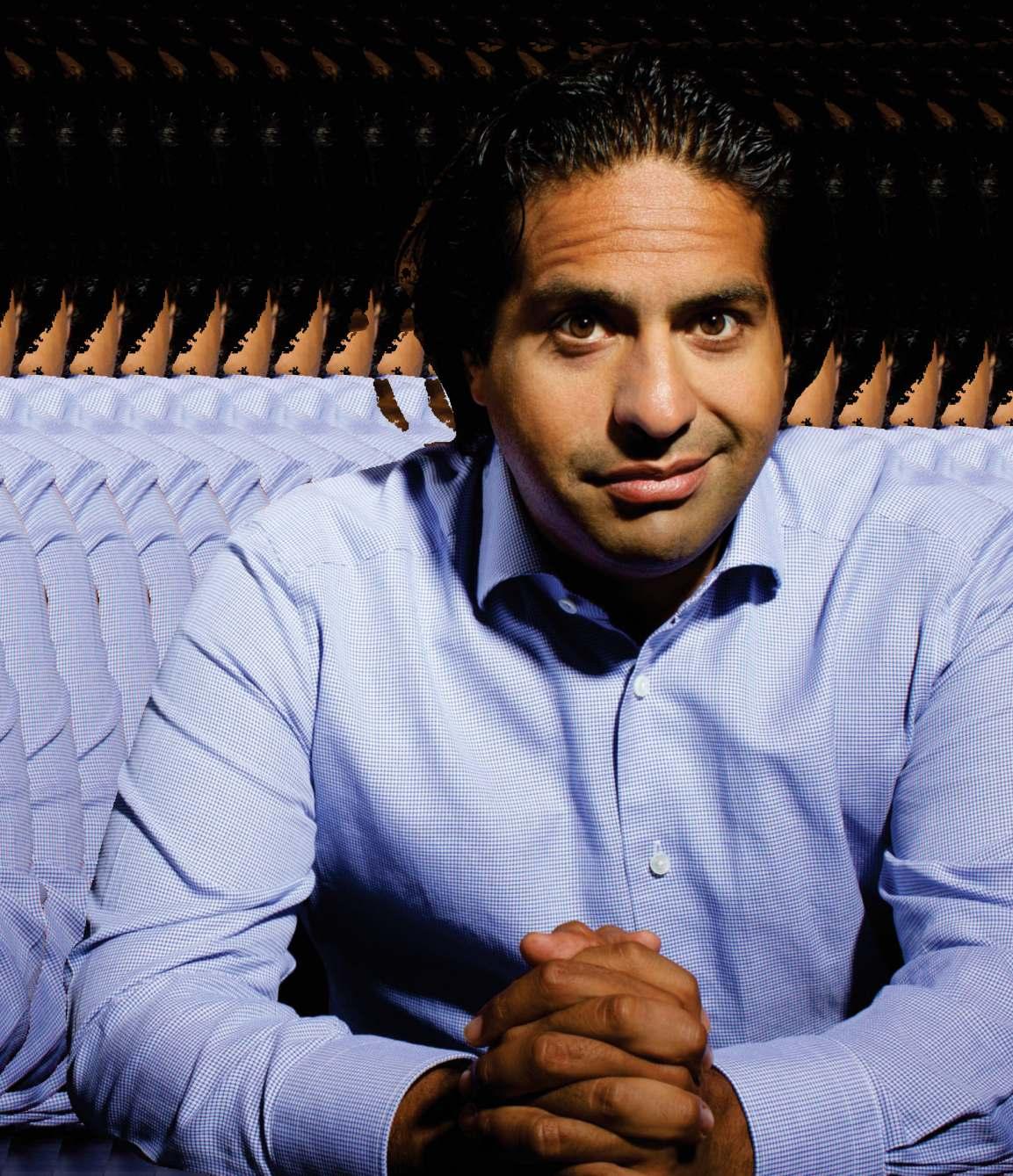
EXELEON MAGAZINE 44
Moez Kassam
A Hedge Fund Manager At The Frontier of Investing

Moez Kassam is an entrepreneur and hedge fund manager who cofounded Anson Funds in 2007. The company manages over $1.5 billion USD in assets and focuses on alternative asset management with three investment strategies: classic shorts, value longs, and opportunistic investments.
Kassam is the Chief Investment Of�icer and oversees the management of the company's �lagship fund, Anson Investments Master Fund.
Anson Funds has been recognized by major platforms like Bloomberg and Barron's as one of the world's top performers and was among the Top 10 Hedge Funds chosen by Barclay Managed Funds. Kassam is also a philanthropist and has received the 2018 Canada's 40 Under 40 award. He serves on the board of directors for the Canadian Olympic
Committee. He also sits on the advisory boards of several community organizations and is quite engraved in the wellbeing of broader society.
Moez and his wife Marissa also have established their own foundation, The Moez & Marissa Kassam Foundation, which aims to support vulnerable communities and has contributed to organizations like the Toronto Foundation for Student Success, Together We Stand and Women's College Hospital.
We are thrilled to have you join us today. Let's start off with a little introduction. Tell our readers a bit about yourself and your company.
MOEZ KASSAM: Anson Funds is a Canadian hedge fund which operates in Toronto, Ontario as well as Dallas, Texas. Established in Dallas in 2003, the �irm

WWW.EXELEONMAGAZINE.COM EXELEON
45
EXCLUSIVE
expanded to Toronto in 2007. Our diverse portfolio includes a range of hedge funds, with total assets under management over $1.5 billion USD. Our commitment to exceptional performance has earned us recognition from leading industry publications, such as Barron's, Bloomberg, and Thomson Reuters. Recently, we were honored as a topperforming hedge fund worldwide by BarclayHedge, based on a three-year annualized return.
In the past year, what is the greatest business achievement you'd like to celebrate with your team? Please share the details of that success.
MOEZ KASSAM: Well, for any hedge fund, the most important thing is to focus on maintaining a strong position while continuing to compound capital. Our �lagship fund, the Anson Investments Master Fund, has grown to around $1 billion itself, and maintained a performance that brings value to our investors. This is something that we're very proud of. That doesn't happen by accident, and the team at Anson Funds worked hard to make this long-short equity hedge fund amongst the best in the country.
Business is all about overcoming obstacles and creating opportunities for growth. What do you see as THE real challenge right now?
MOEZ KASSAM: The current �inancial landscape is
characterized by unprecedented dynamism, with the rise of retail investor participation. These structural changes are transforming the industry in signi�icant ways. At Anson Funds, we recognize the importance of being agile and astute investors. We remain committed to building on our proven strategies, while also staying cognizant to major industry trends and developments. Staying informed is integral to our DNA, and it has never been more critical.
2020, 2021, 2022 threw a lot of curve balls into businesses on a global scale. Based on the experience gleaned in the past years, how can businesses thrive in 2023? What lessons have you learned, and what advice would you share?
MOEZ KASSAM: Speaking primarily about businesses in the �inancial sector, I can say that it's crucial to build resilient portfolios that can withstand market volatility. At Anson Funds, we think that volatility will last for longer than many people expect. That means learning to swim in the rapids, rather than simply waiting for things to calm down. It's about analyzing what is happening and reacting - it's what we do, we stay humble to our position that we can't predict the market but can de�initely analyze what it's showing us in real time.

EXELEON EXCLUSIVE EXELEON MAGAZINE 46

HOW OUT-OF-HOME ADVERTISING IS PUTTING BRANDS RIGHT IN THE HANDS OF CONSUMERS

With digital marketing dominating industry
headlines for the past two decades, business owners and marketing teams could be forgiven for thinking that out-of-home (OOH) or outdoor advertising has had its day.
But think again before writing off this marketing channel because OOH advertising offers unique opportunities that digital marketing channels simply cannot. Putting your brand directly in the hands of customers and connecting with hardto-reach, underserved communities are only two of the strengths of this type of marketing.
HOW OOH ADVERTISING IS GROWING
Mention OOH or outdoor advertising and most people will
COMPANY
EXELEON MAGAZINE 48
SPOTLIGHT
immediately think of billboards on the side of highways and other major thoroughfares. Subway and train advertising might also spring to mind, but at its core, this area of marketing encompasses all adverts that reach consumers outside of their homes.

At the time of writing, around 5% of the world's advertising budgets were dedicated to OOH channels. While that may not seem like much, it actually means that brands are spending more on this medium than they devote to radio or print advertising.
Plus, OOH advertising is rebounding and experiencing strong growth. The industry hit a high in 2019, only to plummet in 2020 as the coronavirus pandemic caused mobility restrictions and made OOH advertising less effective. Right now, industry experts forecast that brands will spend just over $42 billion on OOH
advertising in 2023. This �igure is only slightly less than the spending of 2019, and it is a testament to the sector's recovery.
Looking ahead, the future looks even brighter. In 2024, global outdoor advertising spend is set to surpass $45 billion. While not every global market is recovering from the pandemic at the same speed, the United States looks to be largely following the overall global trend with 2024 spending surpassing the budgets of 2019. The strategy is paying off with over 80% of consumers saying they have made a purchase after seeing an OOH advert, according to Billboard Insider.
THINK BEYOND ROADSIDE BILLBOARDS
No doubt, much of the recovery of OOH advertising is thanks to people spending more time outside, traveling to work, and using public transport and roadways for other trips. However, part of the revival also needs to be credited to marketers �inding more creative ways to connect brands and customers.

New York-based OOH specialists Encompass Media Group (EMG) noticed that brands are looking for more innovative and effective forms of advertising after the pandemic. “Today more than ever, clients need to break through ad clutter,” says EMG Co-CEO Adam Pierce. On average, American consumers see between 4,000 and 10,000 advertising messages per day. As a result of this high volume of advertising messages, brands need to work hard to make a meaningful connection with consumers.
Based on running more than 400 OOH advertising programs annually, the EMG team found that branded coffee sleeves were one of the most powerful locations for advertising messages. “Brands are getting directly into the hands of consumers with those sleeves,” explains Adam Pierce. “Plus, we have found that something as simple as a branded sleeve delivered recall rates of more than 80% for brands.”
WWW.EXELEONMAGAZINE.COM COMPANY SPOTLIGHT 49
Given those �igures, it is not surprising that more of EMG's customers have been opting for branded sleeves over billboards and other, more traditional OOH media. Saying that, there is more to running successful OOH campaigns or integrating OOH into an overall media strategy than the choice of medium.

Aside from putting brands directly into consumers' hands, senior marketers have found that selecting the right location in which to connect to target audiences may turn out to be even more important. EMG's Co-CEO Don Winter believes that brands need to focus on places where consumers spend time rather than simply passing through.
“We have built an extensive network that allows us to reach consumers in key locations such as pharmacies, convenience stores, doctors' of�ices, grocery stores, laundromats, and more,” Winter says. Like the choice of medium, the selection of locations varies depending on individual brands and their marketing objectives. There is no one-size-�its-all solution for using OOH media to connect with consumers.
HOW DIGITAL TECHNOLOGY IS CHANGING OOH ADVERTISING
The renaissance of out-of-home advertising is not only a consequence of the waning pandemic. In fact, it is closely intertwined with the growing use of digital marketing channels. Over the past decade or so, advertisers across the United States have embraced digital billboards.
These huge attention-grabbing displays combine the bene�its of traditional outdoor media with the
engagement potential of digital channels. Rather than showing static adverts or rotating between a selection of static billboards, digital billboards have made it possible to display videos, including 3D videos, and interactive adverts.
The number of digital billboards across the U.S. grew by 80% between 2016 and 2022, evidence of the success of combining digital and OOH advertising. As a result, some of the most innovative OOH advertising campaigns are now categorized as digital out-of-home –or DOOH – advertising.
As a segment within outdoor advertising, digital outdoor advertising is on course to surpass one-third of spending in the sector during 2023. By 2026, DOOH adverts are likely to account for more than four out of ten dollars spent in the �ield.
COFFEE SLEEVES OR DIGITAL BILLBOARDS – WHERE IS OOH HEADED?
At �irst sight, branded coffee sleeves and digital billboards may not have much in common. However, on closer inspection, it becomes clear that both have innovation at their core. Whether brands are looking to connect with consumers over their morning coffee or engage them on a deeper level by revolutionizing their use of billboards, it will take a highly creative approach to stand out from the competition. In either case, OOH has the potential to strengthen the marketing strategy of small and large brands alike.

EXELEON MAGAZINE COMPANY SPOTLIGHT 50



WWW.EXELEONMAGAZINE.COM 51


Which Passive Income Investments
Have the Most Growth Potential Over the Next 5 Years?
In recent years, passive income has become
a highly popular strategy for generating additional income. For entrepreneurs, it can be a great way to generate wealth while still focusing on other business ventures. And, who knows, with enough time your passive income stream may even become your main income stream.
However, speaking from experience, passive income is not nearly as passive as many people think, at least at the start. Almost every passive income venture will require an initial investment of time and money to get things off the ground. And the actual income can take a while before it starts to roll in consistently. In some cases, you could be waiting quite a while before your efforts start to bear fruit.
Nevertheless, a passive income stream can still be highly lucrative when you have a clear strategy. The big question for an investor will be to decide which type of income stream will work best for their situation.
WHAT TO LOOK FOR IN A PASSIVE INCOME SOURCE
Passive income is any regular earnings from investments or other income sources that require little to no effort to maintain. This de�inition is worth pointing out as it highlights what sets passive income apart from more “active” income sources. Passive income is not a job, nor is it a side hustle like freelance work or running an online business. Instead, passive income is something you set up that can essentially run itself.

EXELEON EXCLUSIVE EXELEON MAGAZINE 54
Growth the
A good example is rental property investment. While this does require a signi�icant upfront investment, you can begin collecting money each month once the property is rented. This is considered one of the best forms of passive income and for good reason. That said, you will still need to set aside some cash reserves for routine maintenance every few months. The same can be said for a lot of other passive income types: some maintenance will be required from time to time.
Ultimately, I would advise anyone who's considering setting up a passive income stream to look for something that you can afford, is low maintenance, and maximizes returns. To my mind, the following three passive income ideas �it these requirements perfectly.
ICE VENDING MACHINES
Ice vending machines may seem like a quaint investment idea, but there are a lot of good reasons for giving this idea serious consideration. For a start, they're very low-maintenance and can essentially run themselves. Recent technological advancements have also made them far more user-friendly, with touchscreen interfaces, cashless payments, and inventory tracking. They can also be surprisingly pro�itable, with annual incomes of $30,000 or more from just one machine. Just make sure to set some money aside each month for routine maintenance and restocking.
To get started on this venture, check out your local area to see who's currently selling ice, how they are selling it, and what their pricing is like. This data can help you determine how to market your machines and price them accordingly. Next, choose a location that gets a lot of foot traf�ic, such as college campuses, park grounds, and pedestrianonly streets. With the right setup, an investor can easily start with
one machine and purchase more as the pro�its start to roll in.
ATM MACHINES

It may surprise some to know that anyone can purchase an automated teller machine (ATM) and collect income from the transaction fees of customer withdrawals. These fees can range anywhere from $1 to several dollars depending on the withdrawal amount and with just a handful of these machines, the annual income can be as much as $60,000. You also don't need deep pockets to get started with this venture, nor do you need any specialized education or training to operate each machine.
As with vending machines, your success will depend on setting up each ATM in a high-traf�ic area. You'll also need to decide on which brand and model type to choose from. Some machines only work with a bank card while others can be accessed through a smartphone. Lastly, be careful about where you place your machines as they can be a tempting target for thieves or scammers.
WWW.EXELEONMAGAZINE.COM 55 EXELEON EXCLUSIVE
DIVIDEND STOCKS
Along with real estate, dividend stocks are one of the most tried and true ways to earn passive income. Each time a company earns pro�its, shareholders will receive dividends in the form of cash payments or stock dividends. These dividends can come in every month, quarter, or year and can be a great way to boost your income without doing any additional work.
However, for those who are new to stock investing, a lot of research will be required to identify good stocks, not to mention cash investments for building your portfolio and diversifying it as much as possible. This can quickly become a full-time job, so start small with a few large established companies that have a strong track record of paying out dividends to their investors. With enough time, you can begin generating a steady return of three to four percent each year.
FINAL THOUGHTS
Being able to earn money while you sleep is the dream for many and with any of the above options you can make that dream a reality. Yet as with any business venture, some upfront investments in time and money will be needed to get the ball rolling. And be sure to research potential downfalls to each strategy so you can go into your venture with your eyes open. The great thing about passive income, though, is that once you've made those initial investments, you won't have to do a whole lot to keep the money �lowing in.
About the Author:
Dan Doromal, Co-Owner and Vice President of Operations for Everest Ice and Water Systems has been instrumental in helping his company climb to the top in reputation, earning a number of prestigious awards ranking Everest as one of the fastest-growing and best-performing companies in the country. Under Dan's leadership, Everest continues to set, meet, and exceed ambitious goals for growth in all arenas - sales, size, performance, and more.
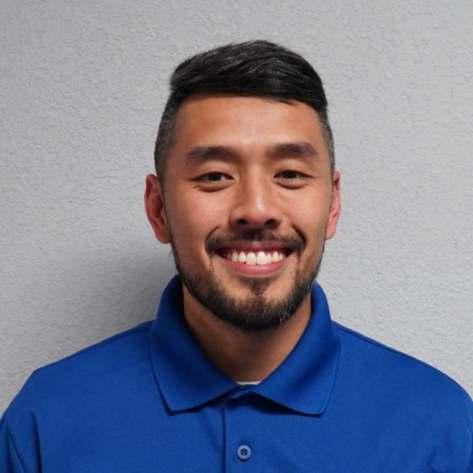
EXELEON EXCLUSIVE EXELEON MAGAZINE 56





w w w e x e l e o n m a g a z i n e c o m











































 CEO MANAGING DIRECTOR
CEO MANAGING DIRECTOR






















